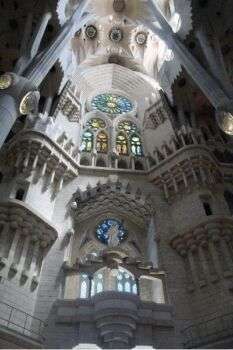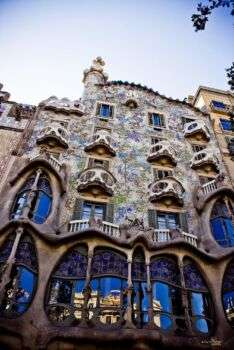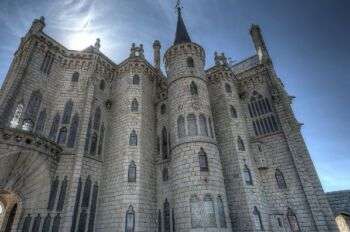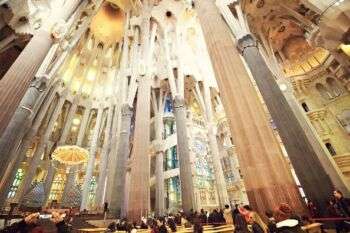Antoni Gaudí Cornet was a Catalan architect and designer, whose style embraces freedom of form, voluptuous color and texture, and organic unity.

Image source:https://search.creativecommons.org/photos/dcd463f4-3cbf-45d3-a61b-91d7be18c0af by Marco Taddia’ s Eye
About His Life
Antoni Gaudì was born on June 25, 1852. His father was a physician, but Antoni became interested in architecture at a young age. He attended school in Barcelona, which later became home to most of his great works. Further, Gaudí was part of the Catalan modernist movement, eventually surpassing it with his natural organic style. Gaudí died on June 10, 1926, in Barcelona, Spain.

Image source: https://search.creativecommons.org/photos/36edc6ca-cccb-4e41-8e0e-f284d64baf25 by jazonz

Image source: https://search.creativecommons.org/photos/854e7905-c76b-4014-8272-4b52ba049c26 by Michela Simoncini
His Major Works
- Sagrada Familia (Spanish for the Holy Family): The most famous of all Gaudí’s works. Its construction began in 1882, but Gaudi took over the supervision of the cathedral a year later. Unfortunately, he did not live to see the completion of his masterpiece. Further, less than one third of the church had been built by the time of his death.

Image source: https://search.creativecommons.org/photos/7932d2a6-909a-4f87-b4a2-570f82097790 by neusitas

Image source: https://search.creativecommons.org/photos/fe0e9112-d4f3-4190-b3c6-5d04bf5eb16f by Passion Leica
- Casa Mila or La Pedrera (1906-1912): One of the best examples of the architect’s creativity
- Park Güell (1900-1914): Commissioned by Eusebi Guëll, it is one of the most famous and beautiful public parks in the world even though it was never completed
- Casa Batllo or House of Bones (1906): located in Barcelona
- Church of Colonia Güell (1908-1914): This structure is a crypt
- Episcopal Palace of Astorga (1889-1913): One of the most famous Gaudi’s works outside Catalonia
- Güell Palace: One of his first works and greatest masterpieces of the late 1880s
- Casa de los Botines or Casa Fernandez y Andres (1891): A spectacular building in Leon, which Simon Fernandez and Mariano Andres commissioned
- Casa Calvet (1898-1900): This structure has a unique, original and innovative design
- Casa Vicens (1883-1889): This building was built as a residential building for the entrepreneur Manuel Vicens

Image source: https://search.creativecommons.org/photos/bbec3ecc-72aa-4167-bb37-3f420702b7fa by The Wedding Traveler

Image source: https://search.creativecommons.org/photos/43fe4a59-3849-4be2-bbdd-08d81f018cdd by undeklinable
Features of His Style
Gaudí’s style has several influences and is the result of the architectural context of the late 19th century, when the need to follow strict historical rules began to go out of style. In this way, Gaudí drew inspiration from oriental styles and Gothic Revival architecture, which is embodied in the works of the French architect Viollet-le-Duc. However, he considered Gothic architecture to be “imperfect” and filled his work with a variety of motifs taken from nature. Additionally, Gaudí followed advances in engineering, and his work regularly features catenary curves, hyperbolic paraboloids, hyperboloids and helicoids, shapes which he used to create efficient structures.

Image source: https://search.creativecommons.org/photos/1f8c0489-fb0f-4491-af57-4439b3a38151 by alessmile ♥
Info sources:
